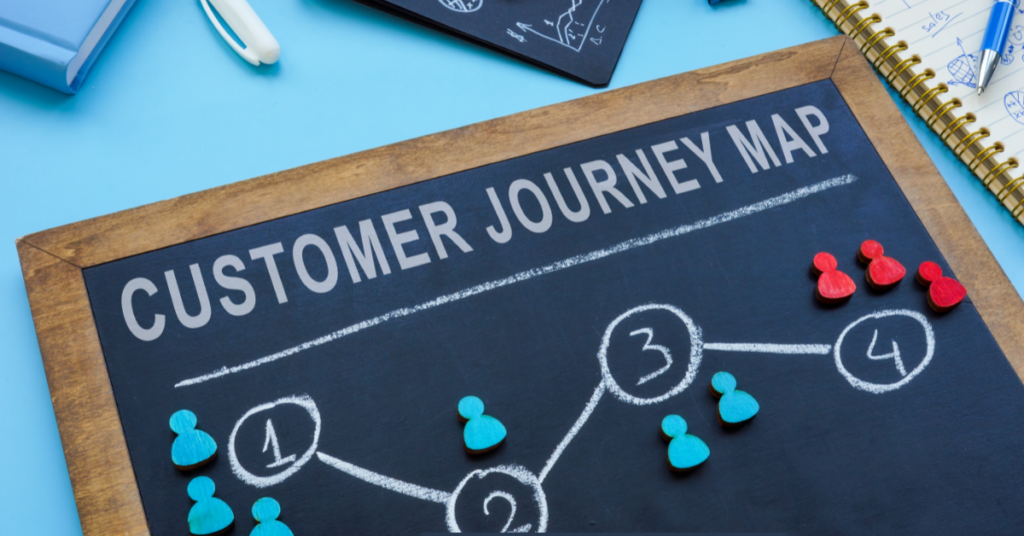Marketers and salespeople use the idea of the customer journey to help frame their work. However, it’s easy to misunderstand the narrow scope of the customer journey concept. If you truly want to WOW your customers, you’ll need to think beyond the sale to help them succeed.
Traditional Customer Journey Data
If you search for “customer journey data,” sometimes “buyer’s journey,” you’ll find a specific connotation used in marketing and sales. Businesses view the customer journey as a series of steps your customer takes before buying your product or service.
Depending on your source, the customer journey typically includes several stages
- Awareness – the customer realizes they have a problem.
- Interest – the customer wants to learn more about you and your solution.
- Desire – the customer transitions from an interest in your solution to wanting your solution.
- Action – the customer makes a purchase.
- Retention – the customer stays with you because you facilitated their success.
- Loyalty – the customer not only stays with you but actively promotes you to others.
You might recognize the first four stages as the AIDA model (i.e., Awareness, Interest, Desire, and Action) of consumer purchasing. The last two items follow up the purchase to create a loyal base who continue to purchase from you.
These perspectives on the customer journey are great frameworks for helping you develop your marketing and sales strategies. However, they all suffer from the same underlying problem…
They focus on how the customer relates to you and your product or service.
But that isn’t the real customer journey…that is just OUR portion of the customer journey.
The Real Customer Journey
The customer’s journey is THEIR journey, not our journey. Their journey began before we found them and will continue well after they choose to stay with us or not.
The real customer journey is one that focuses on achieving the customer’s goals BEYOND solving a singular problem. Their journey is about achieving goals that lie well outside the product or service we are selling.
It is helpful to ask yourself the following questions:
- What is your customer’s current state with respect to their goals and aspirations?
- Where is your customer going, and what is the shape of their trajectory?
- How does your offer fit within their broader ecosystem and lifestyle?
Understanding the Real Customer Journey
Different customers will be at different points along their trajectories toward achieving goals. Your product or service might work equally well for all of your customers. However, they might attach different meanings and levels of importance based on where they are on their journey.
For example, my wife bakes artisan bread as a side hustle. She’s very good (it’s a wonder I don’t weigh 300 lbs).
When someone asks her for bread recommendations, she could simply ask if they like different items on her menu. But that wouldn’t get very far.
Quickly, they would ask for a recommendation. Here is where she starts asking about their customer journey.
She asks if there is a special occasion and, if so, what it is. She asks if other people eating the bread have any food allergies. She asks what other food and drinks will be served with the bread.
After asking these questions, she makes recommendations for which bread to order. She also provides additional recommendations of side dishes, spreads to put on the bread. Finally, she tells them how to treat the bread before and after the meal for maximum freshness.
My wife does this because she wants her customers to have as successful an occasion as possible. Her product may only be a portion of the overall meal, but she recognizes an important truth.
Meals are events where people make memories. Families celebrate, mourn, laugh, and commiserate over food. While the wrong bread might not ruin a meal, the right one can make even a simple meal feel special.
Using the Real Customer Journey Data
The next time you feel yourself thinking about your leads, go beyond your marketing and sales funnels. Take the time to ask about your customer’s REAL journey.
Show interest and get some details. You’ll be surprised about how much better you are able to support, serve, and amaze them.
If you collect data on your customers’ real journeys, you can create new opportunities with those data. You can identify new avenues for:
- Using your product or services in new ways
- Identifying new products or services related to their journey and trajectory
- Creating better relationships that support your customers on their journey to success.
That’s why I always offer as much support as possible to the people I talk to when they ask questions. Whether they buy from me or not, I want to give them an answer.
Why? Because I want them to succeed.


